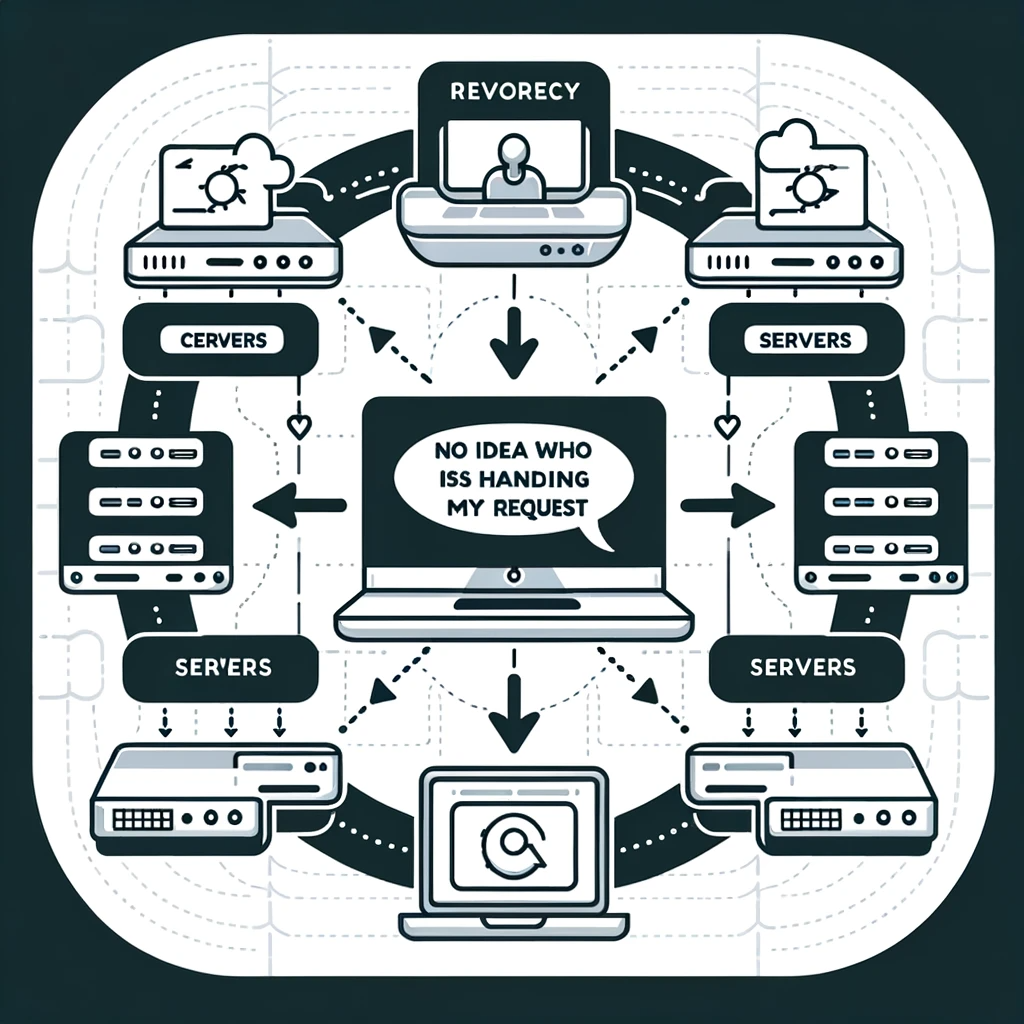
Imagine yourself in a bustling marketplace, where messages are constantly exchanged. This is the internet, and in this world, proxies act as vital intermediaries. Today, we’ll unravel the mystery behind two key players in this digital marketplace: Forward Proxy and Reverse Proxy.
Forward Proxy: The Discreet Messenger
Let’s start with the Forward Proxy. Picture a scenario from college days: a friend attending class on your behalf, a concept known as “proxy attendance.” This analogy fits perfectly here. In the digital realm, a Forward Proxy acts on behalf of a client or a group of clients. When these clients send requests to a server, the Forward Proxy intervenes. It’s like sending your friend to fetch information from a library without the librarian knowing who originally requested it.
In practical terms, Forward Proxies have several applications:
- Privacy and Anonymity: Just as your friend in the classroom shields your identity, a Forward Proxy hides the client’s identity from the internet.
- Content Filtering: Imagine a guardian filtering what books you receive from your friend. Similarly, Forward Proxies can restrict access to certain websites within a network.
- Caching: If many students need the same book, your friend doesn’t ask the librarian each time. Instead, they distribute copies they already have. Likewise, Forward Proxies can cache frequently requested content for quicker delivery.
Reverse Proxy: The Gatekeeper of Servers
Now, let’s turn the tables and talk about the Reverse Proxy. Here, the proxy is no longer representing the clients but the servers. Think of a popular author who, instead of dealing directly with each reader, hires an assistant. This assistant, the Reverse Proxy, manages incoming requests, deciding who gets access to the author and who doesn’t.
Reverse Proxies serve several vital functions:
- Load Balancing: Just as an assistant might direct queries to different departments, a Reverse Proxy distributes incoming traffic across multiple servers, ensuring no single server gets overwhelmed.
- Security: Serving as a protective barrier, it shields the servers from direct exposure to the internet, much like a bodyguard screens people approaching the author.
- Caching and Compression: Just as an assistant might summarize the contents of a letter for the author, Reverse Proxies can cache and compress data for efficient communication.
The Two Faces of Proxy
While both, Forward and Reverse Proxies deal with the flow of information, they serve different masters and have distinct roles in the digital marketplace. Forward Proxies protect the identity of clients and manage client-side requests and content. In contrast, Reverse Proxies manage and protect server-side interests, offering load balancing, enhanced security, and efficient content delivery.
Understanding these two types of proxies, we can appreciate the intricate dance of data and requests that keep the internet running smoothly, much like a well-orchestrated symphony where each musician plays their part to perfection.
Security in Proxy Requests: Authenticated Requests and JWT
When discussing proxies, it’s crucial to address how they handle security, particularly in terms of authenticated requests. This aspect is pivotal in understanding the nuances of both Forward and Reverse Proxies.
Forward Proxy and Security
In a Forward Proxy setup, the proxy acts as an intermediary for the client’s requests. Think of it as a middleman who not only delivers your message but also ensures its confidentiality. When it comes to authenticated requests, such as logging into a secure service like email, the Forward Proxy passes on the authentication credentials like cookies or JWTs along with the request.
This process ensures that the server recognizes the request as authentic, but it does so without revealing the client’s actual identity. It’s akin to sending a trusted messenger with your ID card – the recipient knows it’s your message but doesn’t see you delivering it.
Reverse Proxy and Security
On the flip side, the Reverse Proxy deals with incoming requests to a server. Here, security takes a front seat. The Reverse Proxy can scrutinize each request, ensuring it meets security protocols before it reaches the server. This can include checking JWTs, which are a compact means of representing claims to be transferred between two parties.
By validating these JWTs, the Reverse Proxy ensures that only authenticated requests reach the server. This setup is like a vigilant gatekeeper, ensuring that only those with verified invitations (JWTs) can attend the party (access the server).
Ensuring Secure Communication
Both Forward and Reverse Proxies play a significant role in securing communications. While the Forward Proxy focuses on preserving client anonymity even in authenticated requests, the Reverse Proxy safeguards the server by vetting incoming requests. By incorporating JWT and other authentication mechanisms, these proxies ensure that the dance of data across the internet is not just smooth but also secure.


